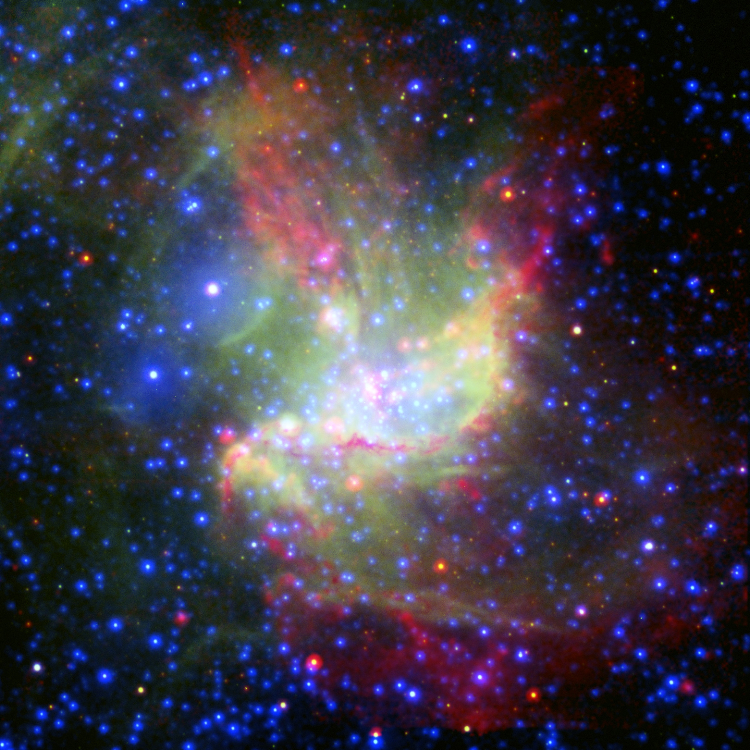
 Credit:NASA / JPL-Caltech / D.Gouliermis (Max-Planck Institute, Heidelberg) and ESA
Credit:NASA / JPL-Caltech / D.Gouliermis (Max-Planck Institute, Heidelberg) and ESA
The Hot and Cold of Star Birth
The creation of new stars involves the intimate entanglement of a number of important physical processes. These processes involve radiation, fast gas flows, and most especially, gravity. The image above of NGC 346, a young massive star forming region in the Small Magellanic Cloud, helps show the details of this relationship. In the above image, blue represents X-ray emission (as seen by the XMM-Newton X-ray Observatory), green represents visible light (observed at the European Southern Observatory New Technology Telescope) and red, infrared radiation (seen by the Spitzer Space Telescope). X-rays are produced both from individual stars and from the reaction of stellar winds with cold clouds of gas and dust. This dust, heated from this interaction and from the outpouring of stellar radiation, glows in the infrared. Visible light is produced by naked stars, and from irradiated clouds of gas. Stellar winds (and explosive supernovae) and stellar radiation help evacuate the center of the star forming region while compressing matter at the edges of it. This gives gravity a hand in overcoming the pressure of the interstellar gas and dust to condense new stars.
Published: October 27, 2008
<
HEA Dictionary ● Archive
● Search HEAPOW
● Other Languages
● HEAPOW on Facebook
● Download all Images
● Education ● HEAD
>
Each week the HEASARC
brings you new, exciting and beautiful images from X-ray and Gamma ray
astronomy. Check back each week and be sure to check out the HEAPOW archive!
Page Author: Dr. Michael F. Corcoran
Last modified Tuesday, 27-Feb-2024 10:06:49 EST


